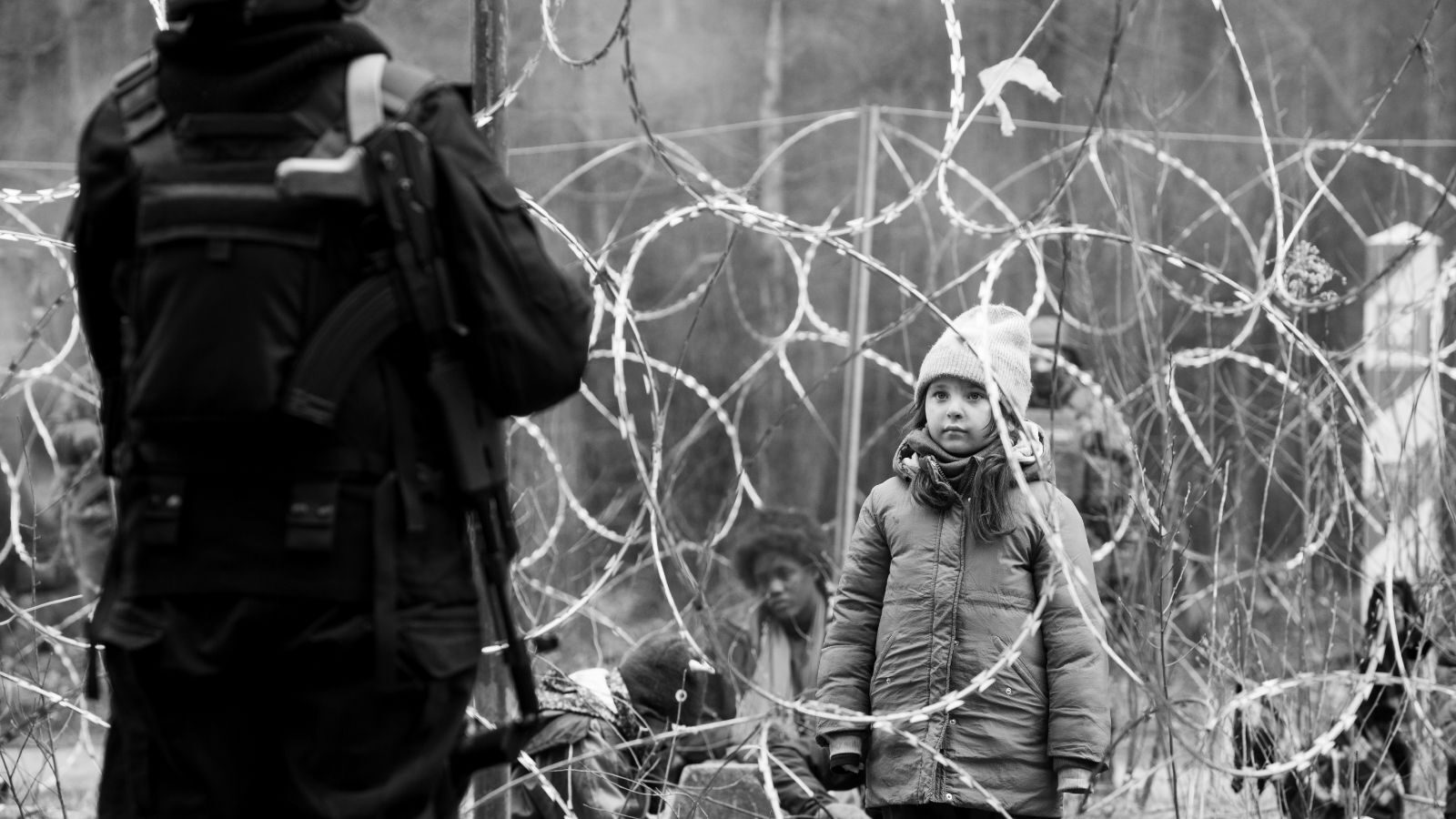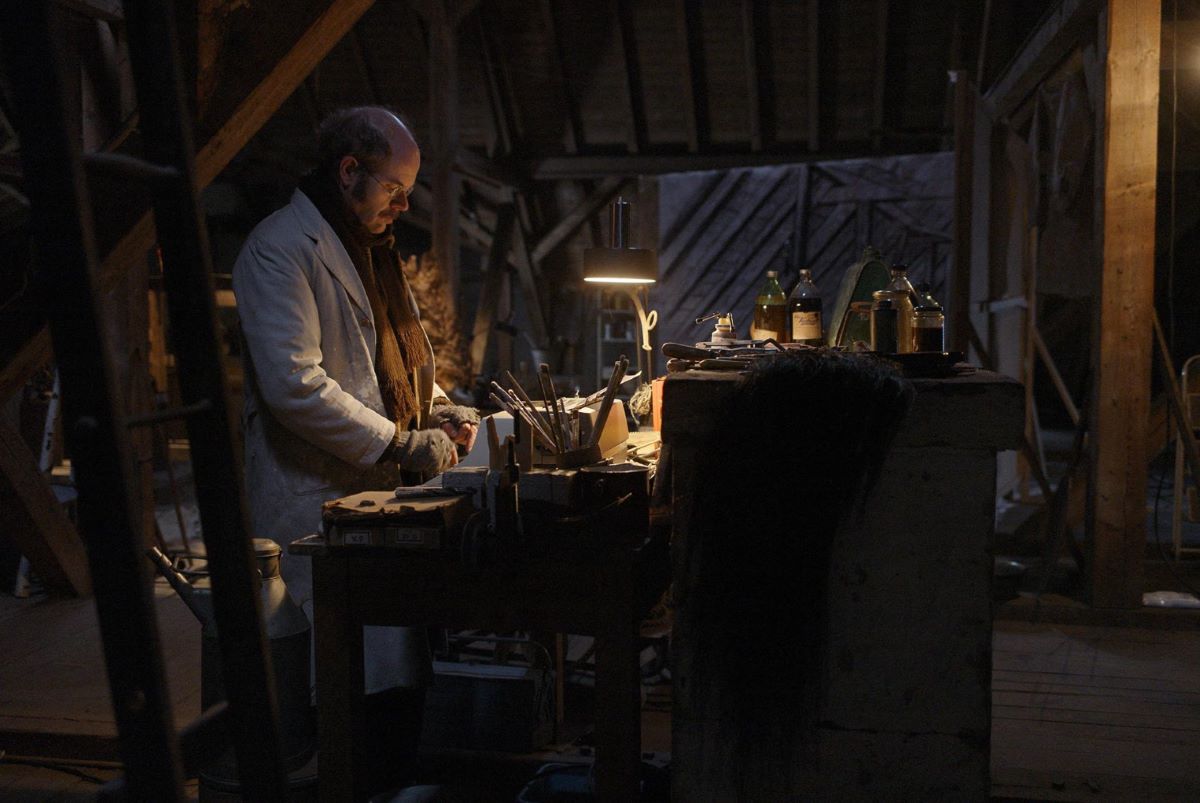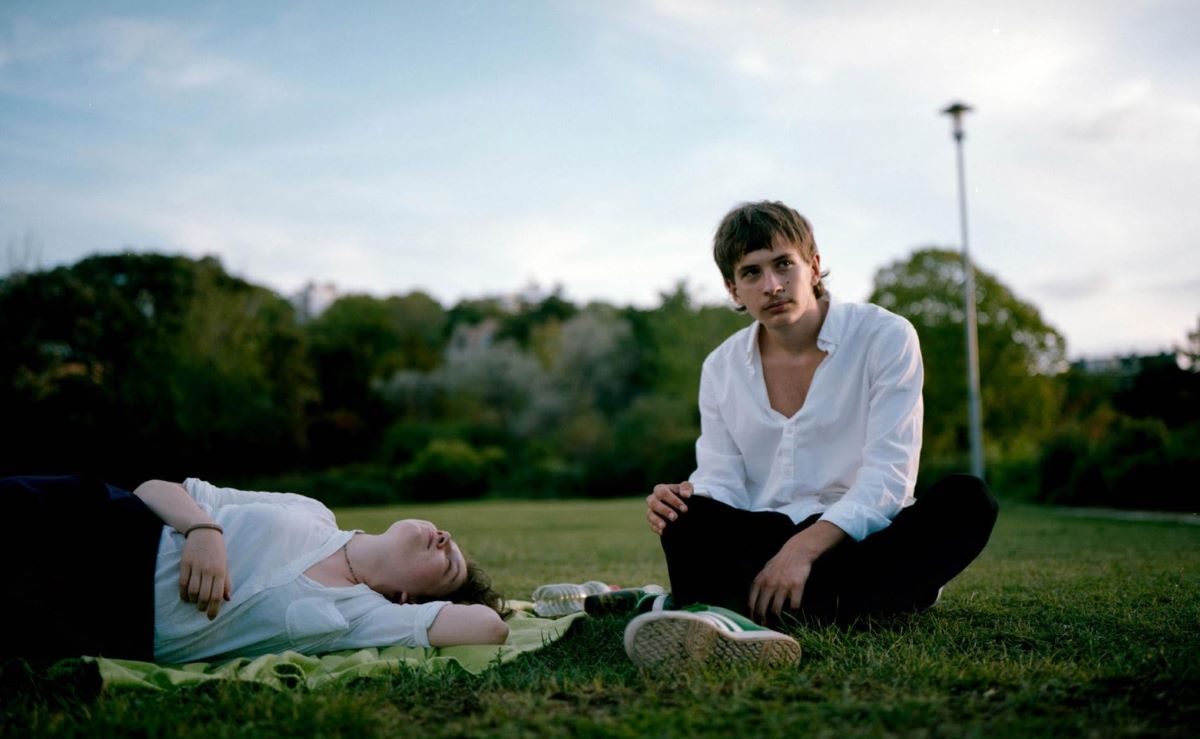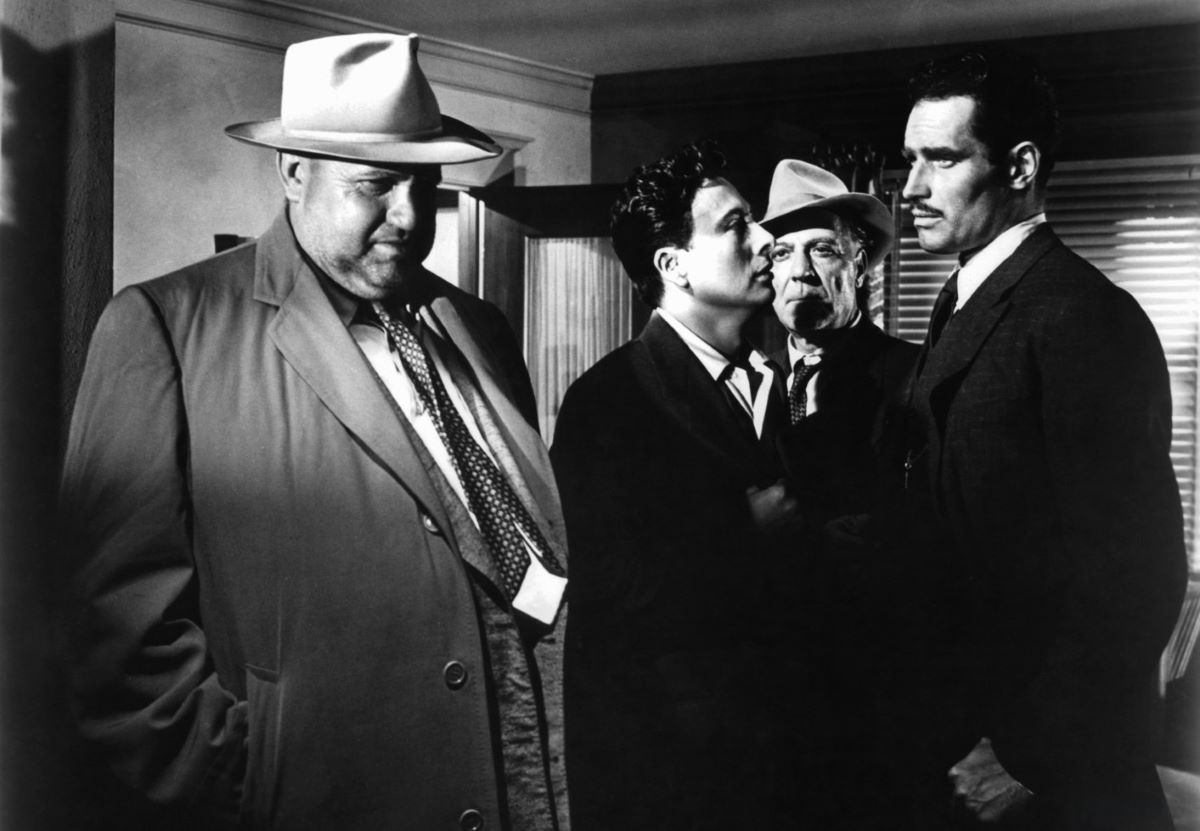Fall 2021. Aboard a Turkish-flagged flight bound for Minsk, family groups with children, including infants, and individual travelers are flying. Everything seems ordinary at first glance, but a few shots quickly reveal these are people fleeing their country, albeit more composed and orderly than the desperate souls arriving by sea to our shores. They are the deceived, ensnared by Lukashenko’s Belarusian government with the false hope of a swift, repercussion-free passage to Poland, and hence to the European Union. A Syrian boy, Nur, finds an excuse to swap seats with Leila (Behi Djanati Atai), a lady less interested in the view from the window, a landscape obscured by clouds as the plane crosses them. Nur and his family, escaping the war in Syria, aim for Poland to eventually reach Sweden; Leila, Afghan by nationality, wishes to stop in Poland. But their plans are severely tested as they try to cross into Polish territory through a forest, only to be pushed back to Belarus along with other hopefuls, attempting the passage again and facing rejection by border guards and Lukashenko’s soldiers in a dreadful loop reminiscent of Dante’s circles of hell, or a concentration camp. Activists also operate in the area, attempting to provide food, medical, and legal support to the forest’s prisoners, but their efforts are handcuffed by Polish law and the utter lack of a collective political will, making them less than popular with the border police.
Shades of Grey (Little) and Black. Agnieszka Holland’s new film, shot by cinematographer Tomek Naumiuk in black and white, gradually adopts an ever-more nocturnal palette, seemingly excluding the full light of day, pushing any residue of optimism out of the frame. The exception is the very first shot, a bird’s-eye view of the verdant expanse of the woods, above one of Europe’s last primeval forests, both monumental and menacing, through which runs an invisible border between Poland and Belarus. This boundary lacks strict geographical features or any sacredness but is a twentieth-century abstraction, dating back to when the two states acquired sharply defined national identities. The bad blood between the inhabitants of these nations is a significant issue. The contrast with the familiar narrative of sea arrivals is stark, as confirmed by Garrone’s images in Io capitano, where the sea is an immense blue page, the desert a sand-colored slate, making it “easier” to isolate the image of the desperate, to clearly outline the contemporary migration narrative on stages under constant media spotlight, while dramas like Holland’s unfold daily, for at least 8 years, with migrants dying in the shadow of tranquil forests on European soil, echoing differently in public discourse, especially outside Poland.
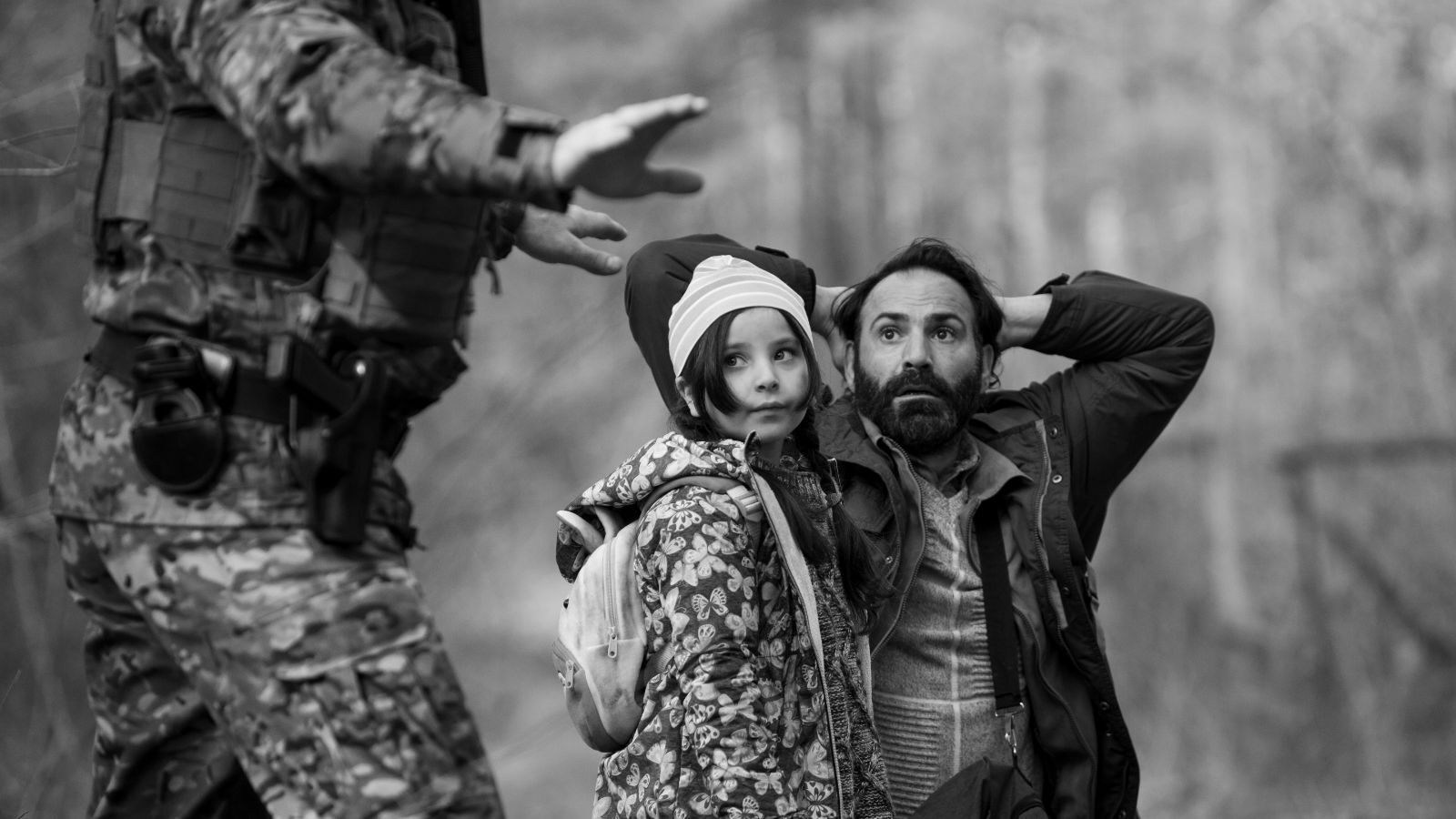
The Green Border, the physical manifestation of a grotesque national and community policy, is not just a border of the Polish state but of the European Union, being one of its easternmost edges, in contact with what is de facto a dictatorship orbiting Putin’s Russia. This border represents one of Europe’s physical vulnerabilities, managed quite differently compared to the corridor from Ukraine opened just a few months after the events depicted, shown in the film’s finale, not without a hint of bitterness.
The news that some of her friends had found a body of someone who died of hypothermia near the border compelled Agnieszka Holland to tackle the theme through fiction, her preferred medium, proving it a necessary narrative: at 75, realizing she has less to lose, and that recounting what happens along that border, stripping the narrative of propaganda, leaving it at the fringes, can still serve as an instrument of activism. Nearly a quarter-century since Europa Europa, after losing herself in the allurements of American cinema, important TV series, and films often pompous but almost always disappointing, few might have expected from Holland a film of this caliber. It demonstrates that strong cultural and human motivations can still lead to cinema that asks questions with the right tone, without retreating into the comfort of navel-gazing (and rhetorically drenched answers).
Reflecting Holland’s stance, at the heart of Green Border, despite its choral nature from the start, emerges the emblematic figure of Julia (Maja Ostaszewska, an activist in real life, as are some of the actors, actual refugees), a psychotherapist widowed by Covid, who springs into action when tragedy strikes close to home, with a generosity far from self-centered. Holland also introduces Jan (Tomek Włosok, a rising star in contemporary Polish cinema), a border guard forced to question his orders and the difference a choice can make, reminding himself and us that we are human, if we can still make room for humanity.
Humanity stands in stark contrast to the cruelties enacted, especially in the film’s first part, by militias on both sides, when one of Holland’s primary concerns seems to be drawing parallels between the migrants’ suffering and the Nazi regime’s atrocities. Yet, the presence of two young co-directors, Kamila Tarabura and Katarzyna Warzecha, was pivotal; perhaps in making the narrative device progressively subtler, more modern. Welcome, then, in a creative process like filmmaking that inherently demands collaboration, is the notion of a cooperative directorship, just as the activists’ actions and the battle for survival in the forest are cooperative efforts. At this point, the nod to Tarkovsky‘s Ivan’s Childhood, a frame that feels like passing the baton, becomes even more central in the scene where the remnants of the Syrian family cross the canal towards a potentially better future: an acknowledgment of cinema’s past, and of the ethical potential of cinema, through the recognition of the classics’ greatness, the power, and the depth of thought behind “simple” images, if we still have the patience to see them.
Alessandro Uccelli
Cineforum, February 7, 2024

